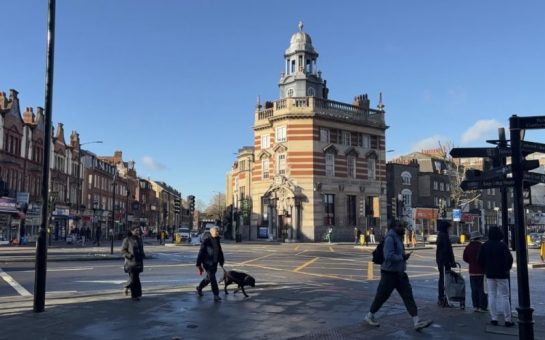Library funding in London has grown in recent years, with Southwark among the boroughs leading the way. How can they prove their worth despite pressures on council budgets?
Marissa Harris, 47, who lives on her own in Southwark, walks a short 12 minutes from her house to the recently opened Una Marson library three to four times a week.
Upon arrival, she gets a warm welcome from the librarians before she takes her regular seat at one of the desks in the quiet area.
Harris does not have a computer at home and prefers to use the library’s digital services for online banking and access to the NHS medical portal.
She said: “I can’t believe how beautiful [the new library] is, it’s so warm and comfy. At the end of the day I don’t want to leave.
“I can do these things on my phone but I end up having to call my brother for help. It’s much easier to chat to a real face for help, the staff here know me by name.”
For many like Harris, libraries occupy an important space in local communities where people can go to accomplish necessary day-to-day tasks and speak to familiar faces.
Sadly, libraries across the country have been at risk of funding cuts due to cost of living pressures on local authority budgets, leading to the closure of more than 180 council-run libraries since 2016, as reported in the BBC.
Since 2010, 38 out of 362 libraries in London have permanently closed and a further 13 have been transferred to volunteer groups.
Closures have been seen across other local authorities in England and Wales, pushing libraries across the country to diversify their service to attract more funding and prove their importance.
Luke Burton, Director of Libraries at Arts Council England, said: “Often, in pockets where there has been increased investment, these areas are working with public health providers to diversify their services and appeal to other sectors within local government.
“Inevitably, when you come to look at costs, libraries are often one of the biggest groups of infrastructure and assets that cost money. When you’re deciding between either dedicating money to a library or closing an adult respite centre, you can see why local authorities make the decisions they do make.”
However, the narrative appears to be changing. Funding for local library services in London has steadily increased since 2020, after substantial cuts in previous years.
The total amount of money allocated to libraries in 2024 across all boroughs was £150.4m, the highest total value since 2016.
This year, London’s library budget made up 21% of England’s total expenditure on library services.
Southwark ranked amongst the top London boroughs with the highest amount of revenue allocated to libraries, with £7.3m in 2024, up by 28% since 2018.
This extra funding has been used to upgrade existing services and invest in the community, meaning that people like Marissa Harris can make the most of its services.
The Una Marson library, which opened in November last year and replaced the East St library after it closed in the same month, has 41 study spaces, private rooms for hire and a Health Station Kiosk that enables visitors to check their height, weight, BMI and blood pressure for free.
The council has plans to do the same to Dulwich library in the new year, adding to the borough’s portfolio of reinvigorated community spaces.
Burton said: “Libraries are more than just books. Information, equity and access to knowledge are at the heart of everything libraries do. More funding would make a difference but ultimately, libraries have to adapt to prove their worth to the local authority.”
The increase in investment appears to be paying off. The number of people living in London who visited a public library in person increased from 23% to 30% between 2022/23 and 2023/24, a survey by the Department for Culture, Media and Sport found last month.
Residents living in Southwark are also encouraged to visit a library because they are more likely to live within walking distance of a local library than in most other London boroughs.
Analysis from the Office for National Statistics shows that 89% of people living in Southwark can walk to a public library in 15 minutes, making it one of the most connected local authorities in the country.
In London, 65% of people live less than 15 minutes’ walk from a library and everyone lives less than an hour's walk from one.
Approximately 43% of the national population live within a 15-minute walk of a public library and this increases to 78% for those living within a 30-minute walk.
People in urban, densely populated areas like London are more likely to live within a 15-minute walk of a public library, compared with more rural, sparsely populated local authorities.
Not everyone in the country is as fortunate as Harris, to have a library just 12 minutes away. But Southwark is an example of the benefits that libraries bring, an argument for why investment in libraries is public money well spent.





Join the discussion